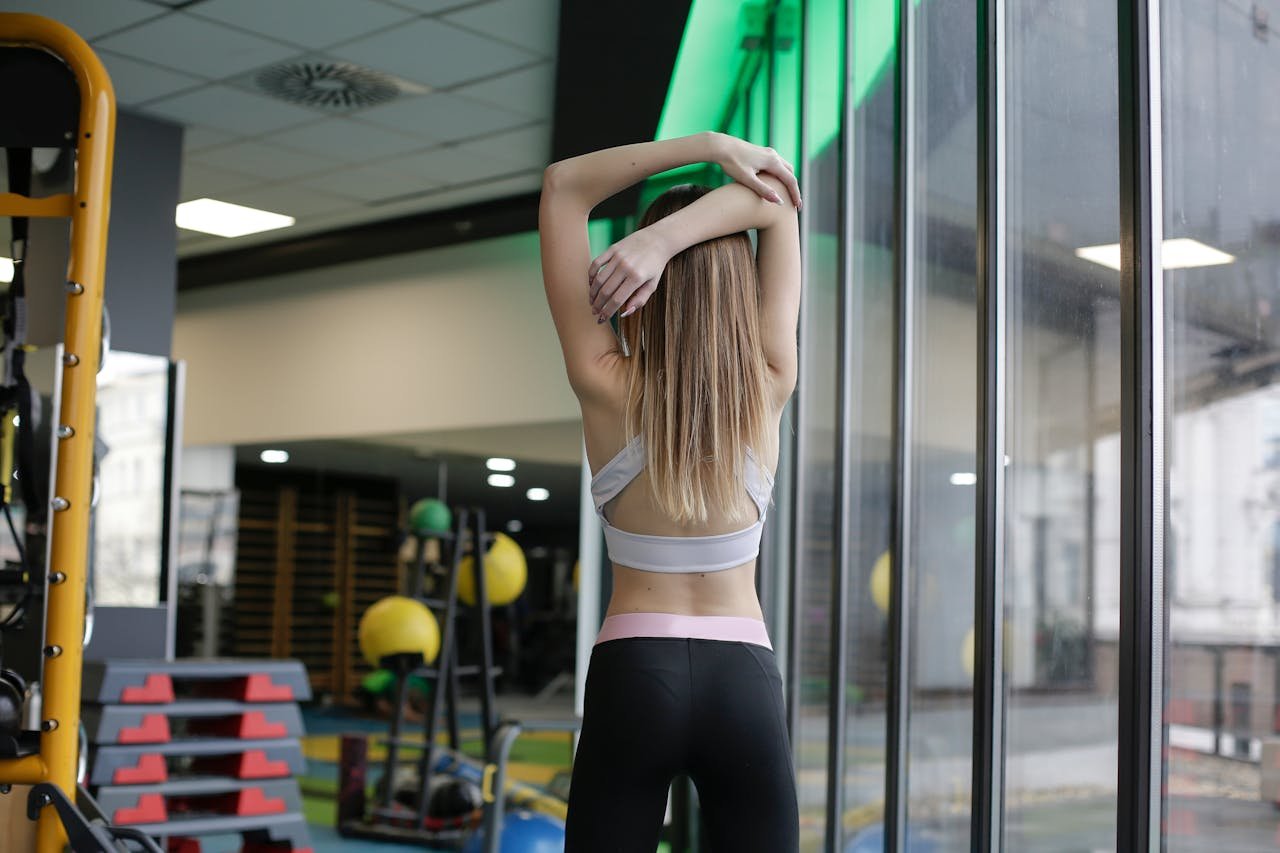The piriformis – or piriformis – is a muscle that is found in a deeper layer of the gluteal area. This serves to rotate the hip outward, but it also influences other factors such as the stability of the pelvis. Furthermore, it is a muscle that is involved in such everyday actions as walking, and it is very important to take care of it. With this objective, we are going to propose some piriformis stretching exercises.
However, let’s first look at some important considerations.
piriformis syndrome
It is also known as piriformis syndrome and is one of the ailments that can occur in this muscle. It occurs when the piriformis muscle is overloaded or contractured. The spasms or inflammation that cause pressure on the sciatic nerve.
The symptoms of this condition are very similar to those of sciatica, and that is why it is easy to confuse it. However, note that piriformis syndrome causes pain in the back of the thigh.
What causes it?
There are several causes for piriformis syndrome, starting with various dysfunctions and anomalies, and injuries in the gluteal area. However, in the article at hand, we want to put special emphasis on two of them.

The first refers to the sedentary lifestyle and poor posture. They are two things that usually go together because they are usually due to office jobs or similar that require spending a lot of time sitting. The piriformis or piriformis tends to shorten in these situations, which has its consequences.
The following cause is just the opposite: excessive exercise or poor practice when practicing it. What happens in these cases is that the muscle ends up being overloaded and a contracture occurs. To avoid this, always warm up before exercising and stretch afterward. Don’t forget to take proper breaks either.
Exercises to stretch the piriformis
We have already talked to you about the importance of working this muscle to avoid injuries like the one we have mentioned. Before starting to explain the exercises, we recommend that you stretch gently. Control your movements at all times and, above all, don’t force more than you can.
On the other hand, take extra precautions if you have any type of back injury. In this case, you can do the exercises, but reduce the bending a little and keep your legs further away from your chest.
Stretching for lumbar rectification
This first exercise is aimed at reducing stiffness in the lower back which causes back pain and poor posture. As you repeat the exercise over the days, you will notice that you move more freely and maintain an upright position more easily. In addition, you will gain energy.
To do this, rest your back on a chair, positioned just above the lumbar spine, and move your lower body towards the floor, keeping your knees at a right angle. Place a towel on the chair to avoid hurting yourself. Then stretch your arms above your head and look up with your neck straight while leaning your back back.
Stretching for hamstrings and psoas
It’s a seated piriformis stretch, with some modifications. Start by sitting on a bench and then lie down, keeping your feet flat on the floor. Grab a tape to help you with this exercise. The next thing is to raise your leg, keeping it straight, and raise it towards the ceiling, noticing tension in the aforementioned muscles.
You must place the tape on your foot and hold it with your hands. Its function will be to maintain the posture and avoid lowering the leg prematurely.
Ball massage

The gluteus and piriformis area sometimes appear tense due to day-to-day actions. Too much sitting in the office or poor posture can be the causes. To treat these muscles and reduce pain, you can do it very simply with the help of a ball.
Lie on the floor with your knees bent and feet flat on the floor. By placing a ball under the area and supporting your weight on it, you will achieve a massage that will help relax the muscles.
Stretching of the piriformis muscle and gluteus
Maintain the same position as described in the previous point, this time without the ball. Now rest one of your feet on top of the knee of the other leg. Take the knee of the leg you are stretching and help yourself with your hands to bring it closer to your chest. In this way, you will work the muscles to reduce the risk of suffering from contractures or injuries.
Stretching with leg support
Put one leg in front of you, bending the knee and trying to touch the ground with it. Your foot will need to be closer to your pelvis than your knee. Now place the toes of the foot behind you on the floor and slightly lift that leg, which will be straight at all times, leaning your torso forward. For this exercise, you can also seek the support of a chair.
As in the previous exercise, you will notice the tension in the gluteus and piriformis. Don’t forget to change legs when you’re done.
Cross-chain stretch
It is a complete exercise since you will work the leg, hip, back, arm, and shoulder. The first thing you have to do is lie down on the floor face up. Keep one of your legs straight, and extend it to the opposite side. Bend the knee of the other and leave it underneath, pressing against the floor.
On the side you stretch your leg on, raise your arm above your head and keep it straight. Place the opposite arm on top of your abdomen. Maintain this posture with a relaxed breath, and then do the same for the opposite side.
These exercises for piriformis stretch will help you keep the muscle in good condition and prevent injuries. Remember not to force more than you should, as this could be counterproductive.
Share this content:
